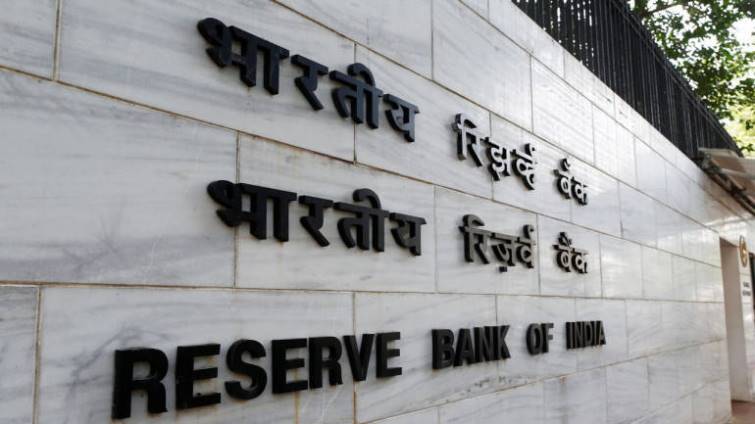In this article we will talk about RBI relief Bonds. Some bonds have a special provision that allows the investor to save on tax. These are termed as Tax-Saving Bonds, and are widely used by individual investors as a tax-saving tool. Examples of such bonds are:
- Infrastructure Bonds under Section 88 of the Income Tax Act, 1961
- Capital Gains Bonds under Section 54EC of the Income Tax Act, 1961
- RBI Tax Relief Bonds
Are you a new Reader ? See all the articles by Categories

What Are RBI Relief Bonds?
RBI Relief Bonds are instruments that are issued by the RBI, and currently carry an 8.5 per cent rate of interest, which was reduced from 9 per cent early this year. The interest is compounded half-yearly. Maturity period of RBI Bonds is five years, and interest received is tax-free in the hands of the investor.
INVESTMENT OBJECTIVES
How Suitable Are RBI Relief Bonds For An Increase In My Investment?
RBI Bonds are not very suitable if you are looking for an increase on your investment. Since RBI Bonds carry interest @ 8.5 per cent, capital appreciation is better in other safe instruments that offer a higher rate of return.
However, if safety is of paramount importance to you, you couldn’t ask for a better deal as this is the safest instrument to invest in. In case of the cumulative option, bonds issued at a face value of Rs 1,000 are redeemed at Rs 1,516.
Are RBI Relief Bonds Suitable For Regular Income?
Yes, you can opt to receive interest either on a half-yearly basis or on maturity of the instrument, along with the principal invested.
If you opt for the first option, i.e., to receive interest on a half-yearly basis, you will receive interest every six months from the date of issue of the bond up to 30th June or 31st December, whichever is earlier. Interest is paid on 1st July and 1st January each year.
To What Extent Do RBI Relief Bonds Protect Me Against Inflation?
RBI bonds do not offer any protection against inflationary pressures. As with other instruments of a similar nature, this risk has to be borne by the investor.
Can I Borrow Against RBI Relief Bonds?
Yes, you can borrow against RBI Bonds by pledging them as security in a bank.
RISK CONSIDERATIONS
How Assured Can I Be Of Getting My Full Investment Back?
RBI Bonds are issued by the country’s central bank, the Reserve Bank Of India. These are among the safest instruments available for investment, and you can be assured of getting back the full amount of your investment.
How Assured Is My Income From RBI Relief Bonds?
Your income from RBI bonds is assured. Since the issuing entity is the country’s central bank, the risk on this investment is nil. In case of the half-yearly interest payment option, the rate of return is 8.5 per cent.
In case of the Cumulative Scheme, where you receive the total interest at the end of the tenure of 5 years, the simple interest works out to 10.32 per cent at the end of the tenure.
Are There Any Risks Unique To RBI Relief Bonds?
No, there are no risks associated with your investment in RBI bonds. This is one of the safest investments you can make. Inflation and fluctuations in interest rates affect investment decisions in RBI Relief Bonds. An increase in the interest rates result in a decrease in bond prices, and vice-versa, if you want to sell them in the secondary market.
Are RBI Relief Bonds rated for their credit quality?
No, since the issuing party is the country’s central bank-the RBI-these bonds are extremely safe, and require no commercial ratings.
BUYING, SELLING, AND HOLDING
How Do I Buy RBI Relief Bonds?
Application forms for RBI Bonds are available and accepted at all branches of the Reserve Bank of India, designated branches of the State Bank of India, and designated branches of nationalised banks across the country.
What Is The Minimum Investment And The Range Of Investment for RBI Relief Bonds?
The minimum investment on RBI Relief Bonds is Rs 1,000. You can apply in multiples of Rs 1,000 thereafter. There is no prescribed upper limit to your investment in this instrument.
What Is The Duration Of RBI Relief Bonds?
The period of holding of RBI Bonds is five years from the date of issue. The bonds are repayable on the expiration of 5 years from the date of their issue.
Can RBI Relief Bonds Be Sold In The Secondary Market?
Yes, the bonds can be sold or transferred to another party. If the bonds are in the form of Bond Ledger Account (BLA), they can be transferred by execution of a Transfer Deed in the prescribed form. However, transfer shall not be deemed as complete until the name of transferee is registered as holder of the Bond in the Office of Issue.
A new BLA will be opened in the name of the transferee (whom the bond has been sold to) for the remaining period by closing the BLA of the transferor (original holder of the bond). The Bond in the form of Promissory Note (PN) will be transferable by endorsement and delivery.
What Is The Liquidity Of RBI Relief Bonds?
While RBI Bonds cannot be redeemed prematurely and must be held for the entire duration of 5 years, you can always exercise the option of selling RBI Bonds in the secondary market if you so desire.
How Is The Market Value Of RBI Relief Bonds Determined?
Market value of RBI Relief Bonds is determined on the basis of prevailing (8.5%) interest rates and market conditions.
What Is The Mode of Holding RBI Relief Bonds?
RBI Relief Bonds can be held at the credit of the holder in an account called BLA or in the form of PN. The bond can be held in demat form, i.e., a certificate of holding will be issued to the holder of bonds in the BLA.
The bonds in the form of BLA are issued and held with the public debt offices of the RBI or any branch of a scheduled bank authorised by the RBI. The bonds in the form of PN are issued only at the offices of RBI. However, bonds issued in one form will not be eligible for conversion into the other.
TAX IMPLICATIONS
Interest received on RBI Relief Bonds is completely exempt from income tax as per the provisions of the Income Tax Act, 1961. RBI Relief Bonds are also exempt from Wealth Tax. However, there is no tax benefit on the amount invested in these bonds.
Hope you liked this article. Leave your views about this article or any query if you have in our comment section.










